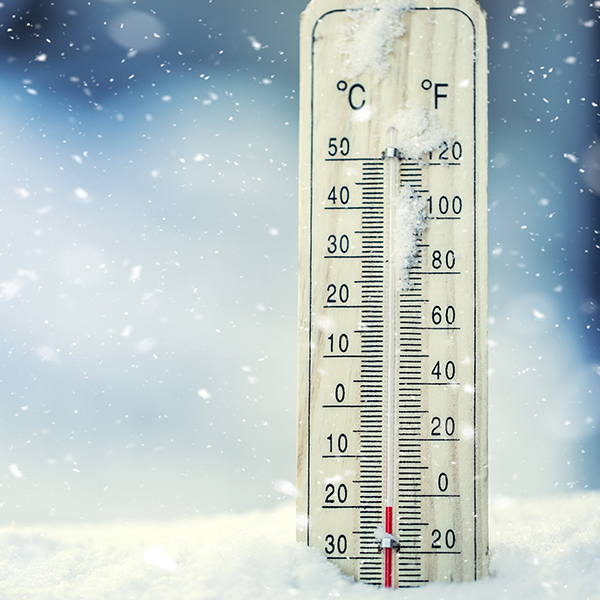
5 Easy Steps to Protect Your Pipes This Winter
Now that it seems we’re getting these ARCTIC BLASTS more frequently it’s time to talk about how to protect your pipes from freezing and breaking. Much of the country has been in a deep freeze in the last few days. We saw temperatures drop to the single digits. Not good for the pipes.
Whether we like it or not, with this early winter onset comes the need to put the summer months behind us and prep our homes for the cold, snow, and ice we’ll continue to see in the months ahead, and this includes some preventative steps to keep our homes’ pipes from freezing.
When the temperature drops low enough, sitting water inside pipes can freeze and, therefore, expand, putting extreme pressure on the pipe’s walls. And eventually, the ice creates enough pressure to cause the pipes to crack. Although a cracked pipe may seem unlikely or that a small crack couldn’t cause that much damage, even a 1/8-inch crack in a pipe can spew up to 250 gallons of water a day, causing flooding, major structural damage, and the immediate potential for dangerous mold growth. Cracked or burst pipes are one of the most common causes of property damage during the winter months, but they are also preventable!
Here are 5 easy steps you can take to reduce the likelihood of frozen and burst pipes in your home.
- Open kitchen and bathroom cabinet doors and interior doors in your house. Opening the cabinet doors beneath the sinks in your house allows warmer air to circulate around the plumbing, especially if your sinks are on an exterior wall. (If you have young children, just be sure to remove any harmful household cleaners or chemicals.) And keeping the interior doors of your house open allows the heat to move through your home more efficiently. This is an easy preventative measure you can take whether you’re at home or out of town.
- Set the thermostat. While you may be tempted to lower the thermostat at night while you’re sleeping and warm under piles and piles of blankets, it’s important to keep the thermostat set at the same temperature both day and night so that your plumbing remains sufficiently heated. If you plan to be out of town, keep the thermostat set to at least 55 degrees Fahrenheit.
- Let cold water drip from a faucet. While drippy faucets are usually something to be avoided, allowing a slow drip from faucets served by exposed pipes will help prevent pipes from freezing. Even a small amount of running water means water can’t sit in one place long enough to freeze.
- Shut the garage door. Because the goal is to keep your home’s walls and pipes as warm as possible, keeping your garage door shut can help give you an extra layer of insulation from the cold air outside. This is especially important if you have water supply lines in the garage.
- Add insulation. Exposed pipes are especially prone to freezing, so wrapping those pipes in some foam insulation is an easy way to give them a little extra protection from cold temperatures. For the long term, you can also consider adding insulation to attics, basements, and crawl spaces and sealing cracks and openings around doors and windows. If you’re already paying a hefty price to heat your home, you might as well do everything you can to make sure the heat stays inside where you want it!
Give us a call!
If your pipes do freeze and break, hiring a professional water extraction team like Water Extraction Experts can give you peace of mind that your home is in good hands.
We are equipped to guide you through the process of protecting your property and getting you back to your life as soon as possible.
We work directly with your insurance.
EMERGENCY 24/7 WATER, FIRE, STORM, DAMAGE SERVICES
CALL: 970-581-4498 Northern Colorado
CALL: 307-220-5900 Southeastern Wyoming
CALL: 505-250-6500 Albuquerque and Santa Fe, New Mexico Areas
